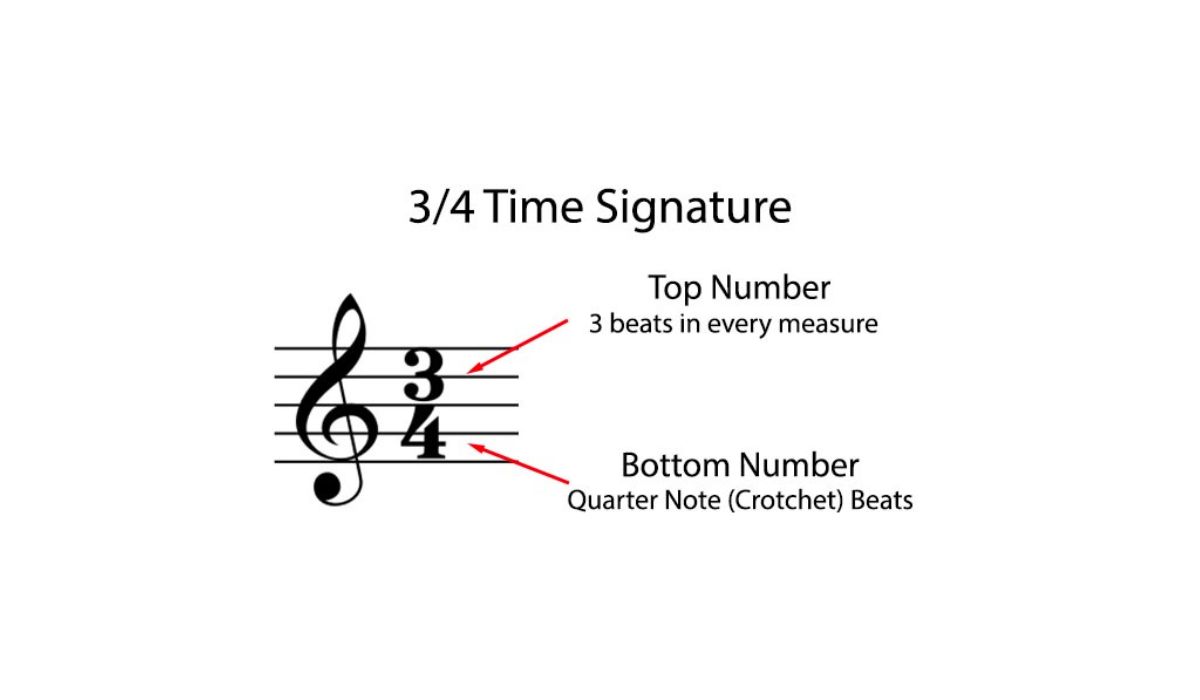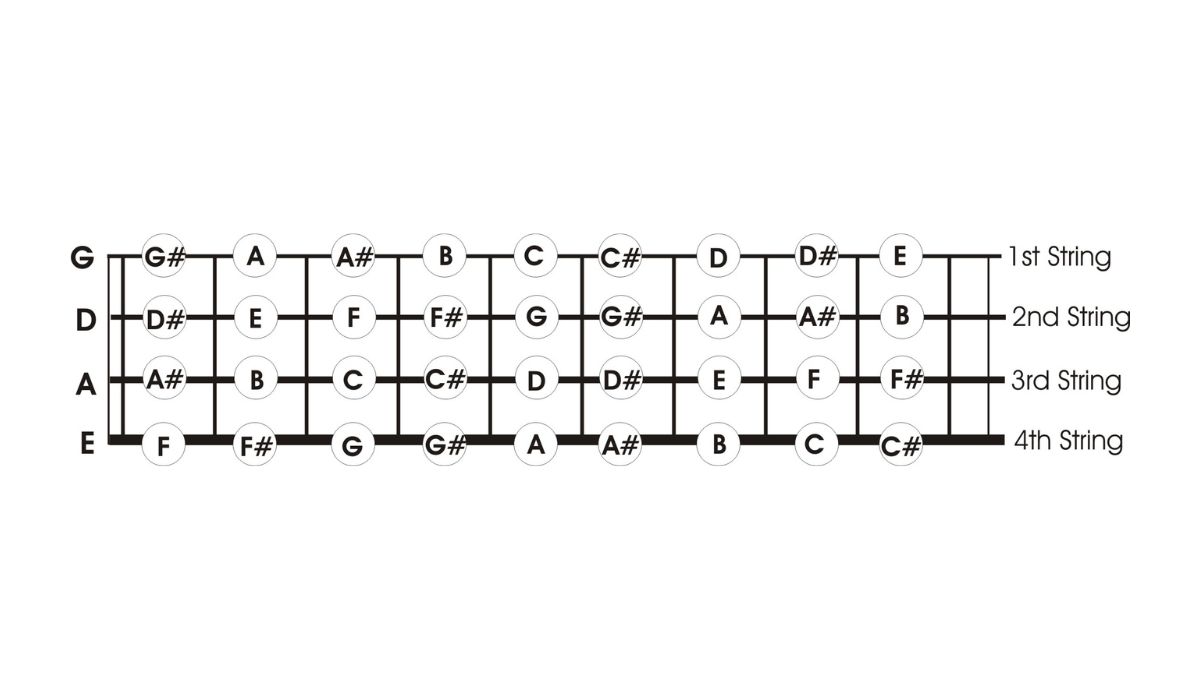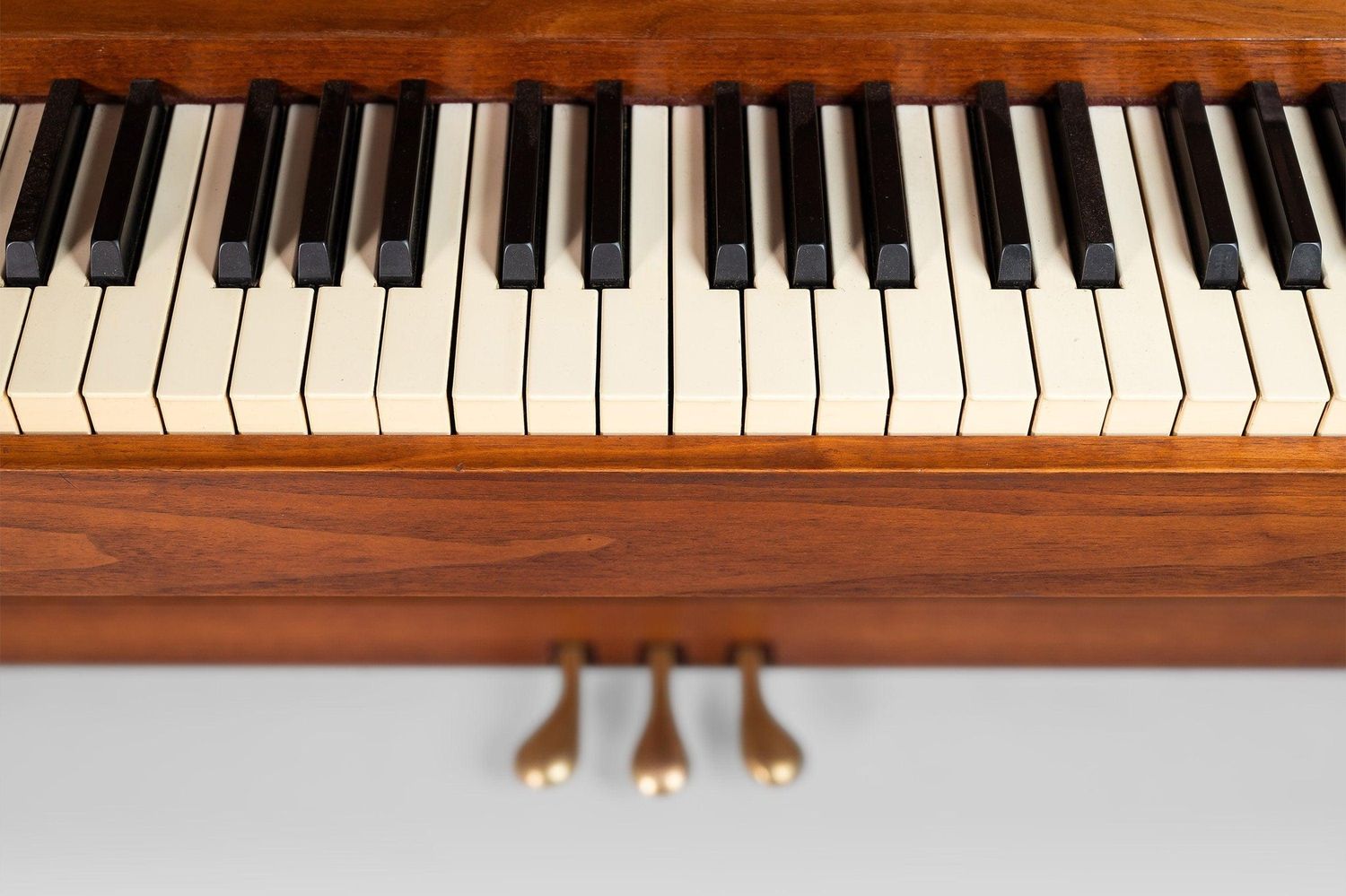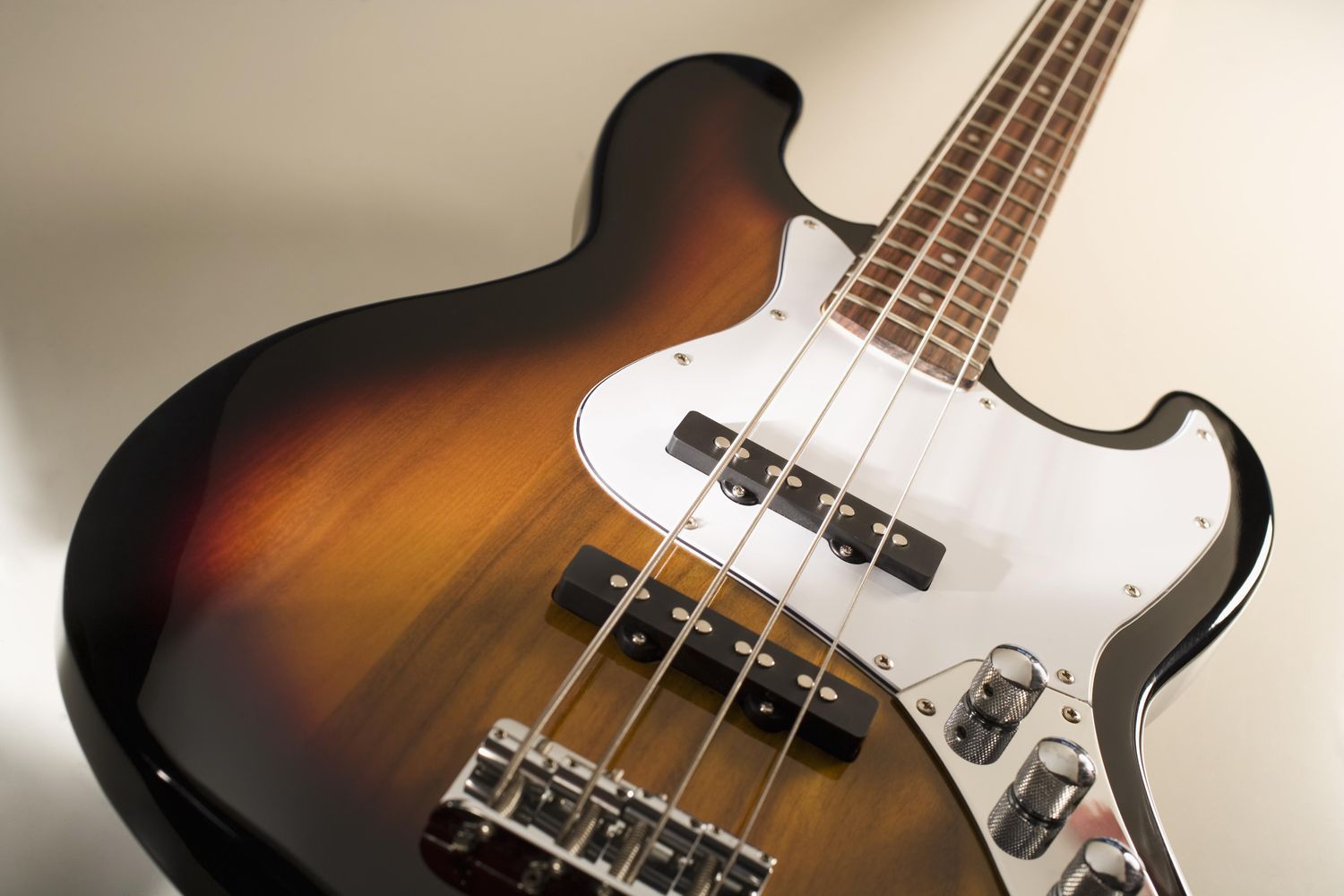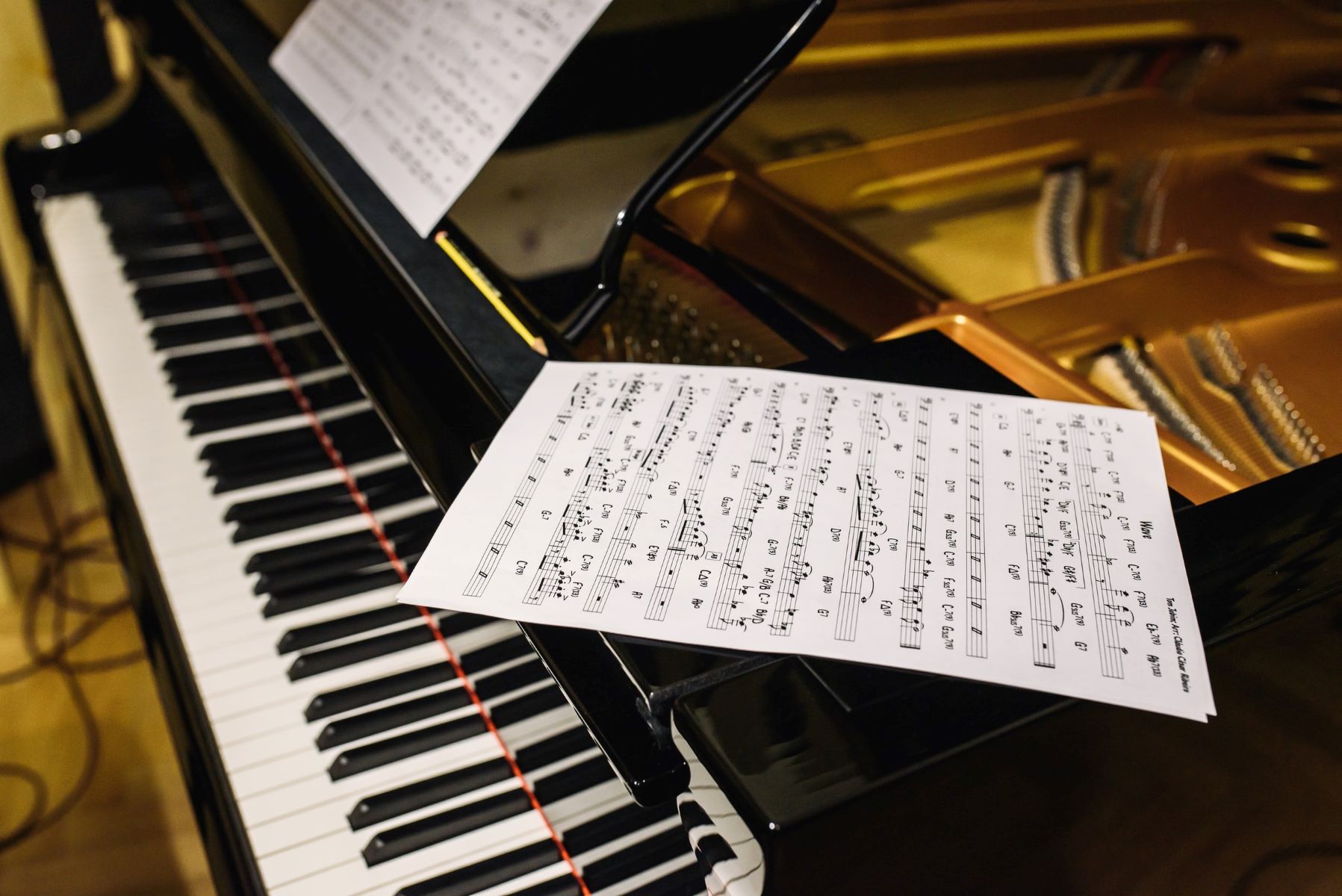Home>Production & Technology>Musician>What Does A Key Signature Tell A Musician?


Musician
What Does A Key Signature Tell A Musician?
Published: January 28, 2024
A key signature is a musical notation that tells a musician which notes are sharp or flat throughout a piece of music. Understanding key signatures is essential for musicians to play in the correct key and maintain the overall tonality of the music.
(Many of the links in this article redirect to a specific reviewed product. Your purchase of these products through affiliate links helps to generate commission for AudioLover.com, at no extra cost. Learn more)
Table of Contents
Introduction
For musicians, understanding key signatures is essential in unlocking the secrets behind a piece of music. Whether you’re a seasoned musician or just starting out on your musical journey, key signatures play a crucial role in shaping the melodies, harmonies, and overall tonality of a composition. So, what exactly does a key signature tell a musician?
In simple terms, a key signature is a musical notation that indicates which notes of a scale are to be played as sharps or flats throughout a piece of music. It acts as a guide, providing a blueprint for the tonal framework of a composition. By understanding the key signature, musicians can easily identify the scale and related chords that form the foundation of the music.
Key signatures are typically indicated at the beginning of a musical piece, right after the clef symbol. They consist of a series of sharps or flats, arranged in a specific order, which tells the musician which notes to alter from their natural state. The number of sharps or flats in a key signature can vary depending on the key of the music.
The relationship between key signatures and scales is crucial to understand. Each key signature corresponds to a specific scale, such as the major or minor scale. The sharps or flats in the key signature determine the notes that need to be raised or lowered from the natural scale. For example, a key signature with two sharps indicates that the notes F and C should be played as F# and C# throughout the piece.
Key signatures also have a significant impact on the process of transposition. Transposition involves changing the pitch of a piece of music to a different key. By transposing a piece, musicians can play it in a different range or adapt it to suit a different instrument. Key signatures serve as a reference point for transposing music accurately, ensuring that the relationships between notes and chords remain consistent.
Definition of a Key Signature
A key signature is a musical notation that indicates the tonality of a piece by specifying which notes in the scale should be altered throughout the composition. It provides important information to musicians about the pitches and tonal relationships within a musical piece. The key signature is typically placed at the beginning of a staff, after the clef symbol.
Key signatures are composed of sharp (#) or flat (b) symbols, or a combination of both, which are placed next to specific line or space on the staff. The order of sharps or flats in a key signature follows a specific pattern, known as the Circle of Fifths. The order of sharps is F#, C#, G#, D#, A#, E#, B#, while the order of flats is Bb, Eb, Ab, Db, Gb, Cb, Fb.
Each sharp or flat symbol in the key signature affects the corresponding pitch throughout the entire composition. For example, if a key signature has one sharp symbol, it indicates that the note one half-step higher than the natural pitch should be played throughout the piece. Similarly, if a key signature has two flat symbols, it signals that the notes two half-steps lower than the natural pitches should be played.
Key signatures are used to establish the tonal center, or the key, of a piece of music. The key determines the set of pitches, chords, and scales that are used in the composition. It influences the mood, character, and overall tonality of the music. By indicating which notes should be altered from their natural pitch, key signatures help musicians navigate through the piece and understand its harmonic and melodic structure.
It’s important to note that key signatures can be in major or minor keys. The major key signature indicates that the composition is based on the major scale, while the minor key signature signifies that the piece is in a minor key. The specific arrangement of sharps or flats in the key signature informs the musician about which notes to modify and gives a clear indication of the tonality and mode of the music.
Overall, key signatures are a fundamental aspect of music theory that provide musicians with vital information about the tonality, scale, and mode of a musical piece. By understanding and interpreting key signatures correctly, musicians can effectively navigate their way through a composition and bring it to life with the intended tonal color and expression.
How Key Signatures Are Indicated
Key signatures are typically indicated at the beginning of a musical staff, just after the clef symbol. They are placed on the staff to inform musicians about the tonal framework of the composition and which notes to alter from their natural state.
In sheet music, key signatures are represented by symbols such as sharps (#) or flats (b). These symbols are positioned on specific lines or spaces of the staff, indicating which notes should be played as sharps or flats throughout the piece.
Sharp key signatures are usually located on the letter lines of the staff. For example, a key signature with one sharp symbol is placed on the F line, indicating that F# should be played throughout the composition. If the key signature has multiple sharps, each additional sharp symbol is positioned on the line or space above the previous sharp symbol in the key signature.
On the other hand, flat key signatures are generally located on the letter spaces of the staff. For instance, a key signature with one flat symbol is placed on the B space, signifying that Bb should be played throughout the piece. Like sharp key signatures, additional flat symbols in the key signature are positioned on the space above the previous flat symbol.
It’s important to note that the order of the sharp or flat symbols in the key signature follows a specific pattern. For the sharp key signatures, the order of sharps is F#, C#, G#, D#, A#, E#, B#. For the flat key signatures, the order of flats is Bb, Eb, Ab, Db, Gb, Cb, Fb. This order is derived from the Circle of Fifths, a conceptual tool used in music theory to understand key relationships.
In addition to the position and order of the symbols, it is also essential to understand that the presence of a sharp or flat in the key signature affects all occurrences of that particular note throughout the piece, both in the melody and in the accompanying harmonies.
Overall, the indication of key signatures in sheet music serves as a guide for musicians, helping them quickly identify the tonality, scale, and mode of the composition. It provides a visual reference point for understanding and interpreting the musical content accurately, allowing musicians to bring out the intended tonal color and expression in their performance.
Relationship Between Key Signatures and Scales
Key signatures and scales have a close relationship in music theory. A key signature is a visual representation of the specific set of notes, known as a scale, that form the foundation of a musical piece. Understanding this relationship is fundamental for musicians as it helps them navigate and interpret the tonal structure of a composition.
Each key signature corresponds to a particular scale, such as the major scale or the natural minor scale. The key signature indicates which notes in the scale should be altered from their natural state, either by raising them (sharp) or lowering them (flat).
Let’s take the example of the key of C major, which has no sharps or flats in the key signature. This indicates that the composition is based on the C major scale, which consists of the notes C, D, E, F, G, A, and B. The natural notes of the C major scale do not require any alteration, so there are no sharps or flats indicated in the key signature.
However, if we consider the key of G major, which has one sharp (F#) in the key signature, it tells us that throughout the composition, every occurrence of the note F should be played as F#. This alteration is necessary to maintain the intervallic relationship within the G major scale, which is G, A, B, C, D, E, F#.
Similarly, the key of D major has two sharps (F# and C#) in the key signature, indicating that in this key, the notes F and C are played as F# and C#, respectively. The D major scale consists of the notes D, E, F#, G, A, B, C#.
For minor keys, the relationship between key signatures and scales follows a similar pattern. For example, the key of A minor, which is the relative minor of C major, has no sharps or flats in its key signature, just like its relative major key. However, in the harmonic and melodic minor scales, certain notes are altered from the natural minor scale, and these alterations are indicated in the key signature.
Understanding the relationship between key signatures and scales allows musicians to easily identify the tonality and mode of a composition. It helps in decoding the harmonic and melodic structure and aids in improvisation, composition, and overall musical interpretation.
In summary, key signatures provide a visual representation of the scales associated with a particular key. They indicate the alteration of specific notes, either through sharps or flats, to maintain the tonal relationships within the chosen scale. This relationship between key signatures and scales is the foundation on which musicians build their understanding and interpretation of a musical piece.
Key Signatures and Transposition
Transposition is the process of changing the pitch of a musical piece to a different key. It is a common practice among musicians to play a piece of music in a different range or adapt it to suit a different instrument. Key signatures play a crucial role in transposition, providing a reference point for accurately shifting the pitch relationships while maintaining the integrity of the composition.
When transposing a piece, musicians often refer to the original key signature to determine the necessary alterations for the new key. By understanding the relationship between key signatures and scales, musicians can accurately transpose the piece to a different key while maintaining the same intervals and tonal relationships.
For example, if a piece is written in the key of C major and the musician wants to transpose it to the key of G major, they know that the original key signature has no sharps or flats. To transpose to G major, which has one sharp (F#), the musician will alter every occurrence of the note F in the original piece to F# in the transposed version. This maintains the same intervals and relationships within the G major scale.
Similarly, when transposing to a key with flats in the key signature, such as the key of F major (which has one flat symbol – Bb), the musician will alter every occurrence of the note B in the original piece to Bb in the transposed version. Again, this ensures that the intervals and relationships within the F major scale are maintained.
Understanding the relationship between key signatures and transposition is essential for musicians who work with multiple instruments or who play with other musicians who might be using different instruments. It allows for seamless integration and adaptation of the music to suit the needs of different performers and instruments.
Transposition can also be used to accommodate the vocal range of different singers. By transposing a piece to a higher or lower key, singers can perform comfortably within their vocal range, allowing them to showcase their abilities and express the emotions of the music more effectively.
In summary, key signatures are integral to the process of transposition. They provide musicians with a guide for accurately transposing a piece of music to a different key while maintaining the same tonal relationships. Understanding this relationship allows for smooth adaptations of music to suit different instruments, vocal ranges, and musical needs.
Interpreting Key Signatures in Sheet Music
Interpreting key signatures in sheet music is an essential skill for musicians as it provides vital information about the tonality and scale of a musical piece. By understanding and applying key signatures correctly, musicians can navigate through the music with ease and accuracy.
When reading sheet music, the key signature is typically found at the beginning of the staff, right after the clef symbol. It consists of sharps (#) or flats (b) arranged in a specific order, indicating which notes of the scale need to be altered throughout the composition.
To correctly interpret key signatures, musicians should familiarize themselves with the order and placement of sharps or flats. For example, a key signature with one sharp is placed on the F line of the staff, indicating that every occurrence of the note F should be played as F# throughout the piece. Additional sharps in the key signature are added in a specific order, placed on the line or space above the previous sharp symbol.
Similarly, flat key signatures follow a specific order and placement. For instance, a key signature with one flat is positioned on the B space of the staff, indicating that every occurrence of the note B should be played as Bb. Additional flat symbols are added in the order specified by the key signature.
It’s important to note that key signatures remain in effect throughout the entire composition unless otherwise indicated. This means that the altered notes indicated by the key signature are applied consistently across all octaves and throughout all measures in the piece.
Interpreting key signatures also involves understanding the relationship between the key signature and the scale it represents. For example, if a piece has a key signature with three flats (Bb, Eb, Ab), it indicates that the composition is likely in the key of Eb major or its relative minor key, C minor. Musicians need to be familiar with the scales associated with different key signatures to recognize the tonal foundation and make informed musical choices.
In addition, key signatures can provide hints about the tonal color and mood of a composition. Major key signatures often evoke a sense of brightness and happiness, while minor key signatures can convey a more somber or melancholic mood. By understanding the key signature and the related scale, musicians can better interpret and express the intended emotions of the piece.
Overall, interpreting key signatures in sheet music is vital for musicians to accurately understand and perform a musical composition. By recognizing the order and placement of sharps or flats, understanding their effect on the notes within the piece, and connecting key signatures to scales, musicians can confidently navigate through the music and bring it to life with the intended tonal color and expression.
Importance of Understanding Key Signatures for Musicians
Understanding key signatures is of utmost importance for musicians, regardless of their skill level or musical genre. Key signatures provide crucial information about the tonality, scale, and harmonic framework of a composition. Here are some reasons why understanding key signatures is essential for musicians:
1. Comprehending the Tonal Center: Key signatures indicate the tonal center, or the key, of a piece of music. By understanding the key signature, musicians can easily identify the scale and chords that form the backbone of the composition. This knowledge is essential for interpreting the melodic and harmonic structure and for making informed musical choices.
2. Navigating through Sheet Music: Key signatures serve as a roadmap for reading sheet music. They provide guidance on which notes should be altered throughout the composition. By recognizing key signatures, musicians can anticipate the accidentals (sharps or flats) and play the correct pitches, resulting in accurate and expressive performances.
3. Interpreting Musical Expressiveness: Key signatures play a significant role in shaping the emotional character of a musical piece. Major key signatures often evoke feelings of brightness and happiness, while minor key signatures bring about a somber or melancholic mood. Understanding key signatures enables musicians to grasp the intended emotional context of a composition and convey it effectively to the audience.
4. Adapting to Different Instruments: Musicians who play multiple instruments or collaborate with musicians playing different instruments often need to transpose music into different keys. Key signatures provide a reference point for transposition, ensuring that the relationships between notes and chords remain consistent when playing the music on a different instrument. This adaptability opens up a wider range of musical possibilities and collaborations.
5. Improvisation and Composition: Understanding key signatures is crucial for musicians engaged in improvisation or composition. Key signatures provide a framework for improvising melodies, harmonies, and solos, enabling musicians to make informed choices within a given tonal context. Similarly, composers can use key signatures to create and manipulate tension, resolution, and harmonic progressions in their original compositions.
6. Collaborative Music-making: When musicians come together to perform in bands, ensembles, or orchestras, understanding key signatures is essential for seamless collaboration. Key signatures help musicians communicate and understand each other’s parts, ensuring that the tonal relationships and harmonic structures are preserved throughout the performance.
7. Musical Analysis and Appreciation: A deep understanding of key signatures allows musicians to analyze and appreciate the works of other composers. By recognizing key signatures and their related scales, musicians can identify recurring patterns, modulations, and key changes within a composition. This insight enhances their ability to interpret and appreciate the rich musical tapestry created by composers.
Overall, understanding key signatures is essential for musicians to unlock the full potential of a musical composition. It enables them to accurately navigate through sheet music, interpret tonal centers, adapt to different instruments, improvise, compose, collaborate effectively, analyze music, and appreciate the expressive beauty of musical works. By embracing key signatures, musicians gain a deeper understanding of the language of music and enhance their ability to connect with audiences on a profound level.
Conclusion
Key signatures are a fundamental aspect of music theory that holds great importance for musicians. They provide valuable information about the tonal center, scale, and harmonic structure of a composition. Understanding and interpreting key signatures is essential for musicians of all levels, as it enhances their ability to navigate sheet music, make informed musical choices, and communicate effectively with other musicians.
By recognizing and applying key signatures correctly, musicians can accurately identify the tonality, mood, and emotional expression intended by the composer. Key signatures serve as a guide for playing the correct pitches, whether it involves playing sharps or flats, and ensure the proper execution of melodic and harmonic elements.
Moreover, key signatures play a vital role in transposition, allowing musicians to adapt music to different instruments or to accommodate vocal ranges. They provide a reference point for maintaining the relationships between notes and chords when playing in different keys.
Understanding key signatures also deepens musicians’ appreciation and analysis of music. It enables them to recognize patterns, key changes, and modulations within a composition, allowing for a more thorough exploration and interpretation of the music.
Ultimately, a solid understanding of key signatures empowers musicians to confidently and accurately interpret and perform a piece of music. It enables them to fully express the emotions, techniques, and musical ideas envisioned by the composer, creating a rich and fulfilling musical experience for both performers and listeners.
In conclusion, key signatures are the roadmap that guides musicians through the tonal landscape of a musical composition. They provide invaluable insights into tonality, scales, harmony, and musical expression. Whether through reading sheet music, transposing, improvising, composing, collaborating, or analyzing music, a solid grasp of key signatures is a cornerstone for any musician seeking to better understand, perform, and appreciate the vast world of music.

